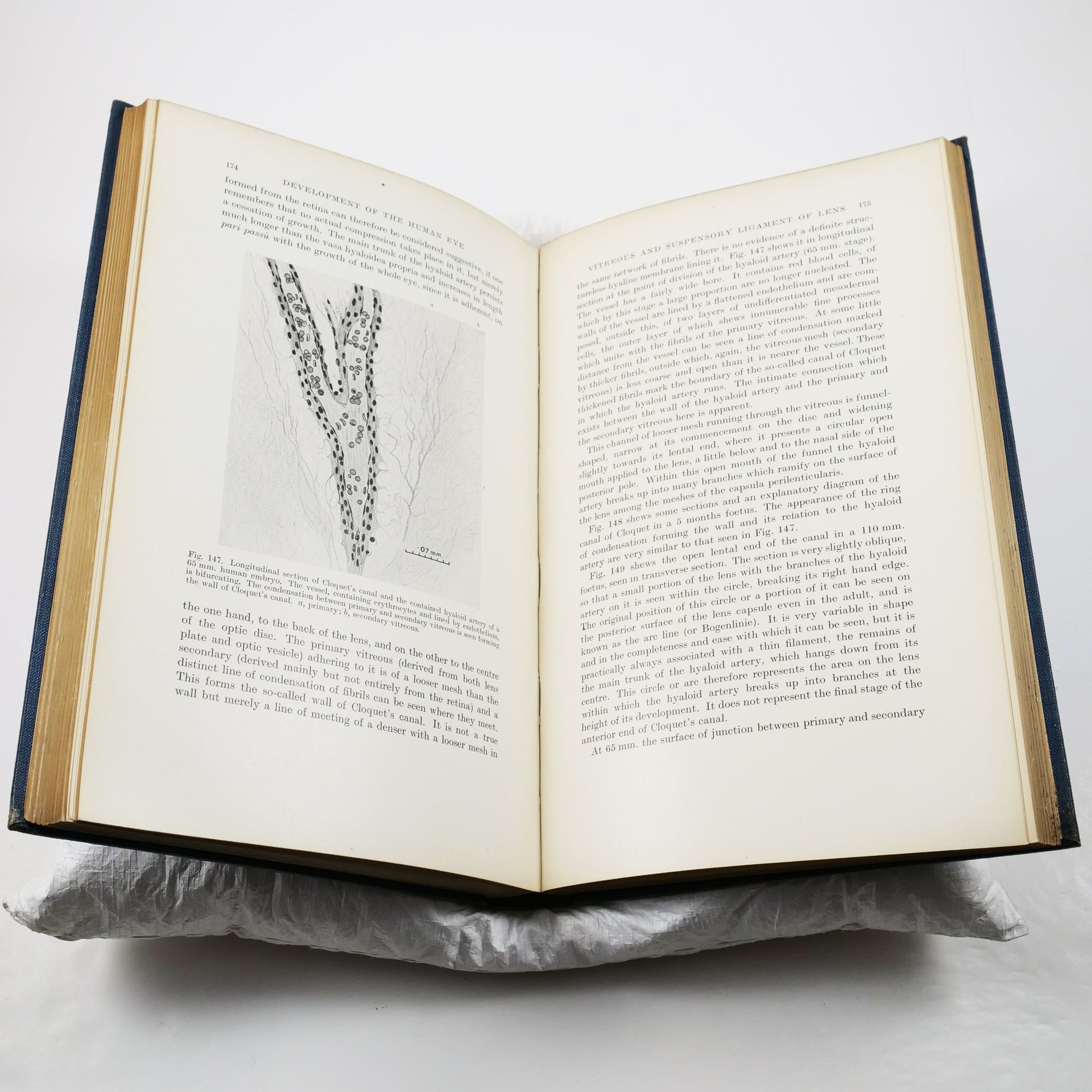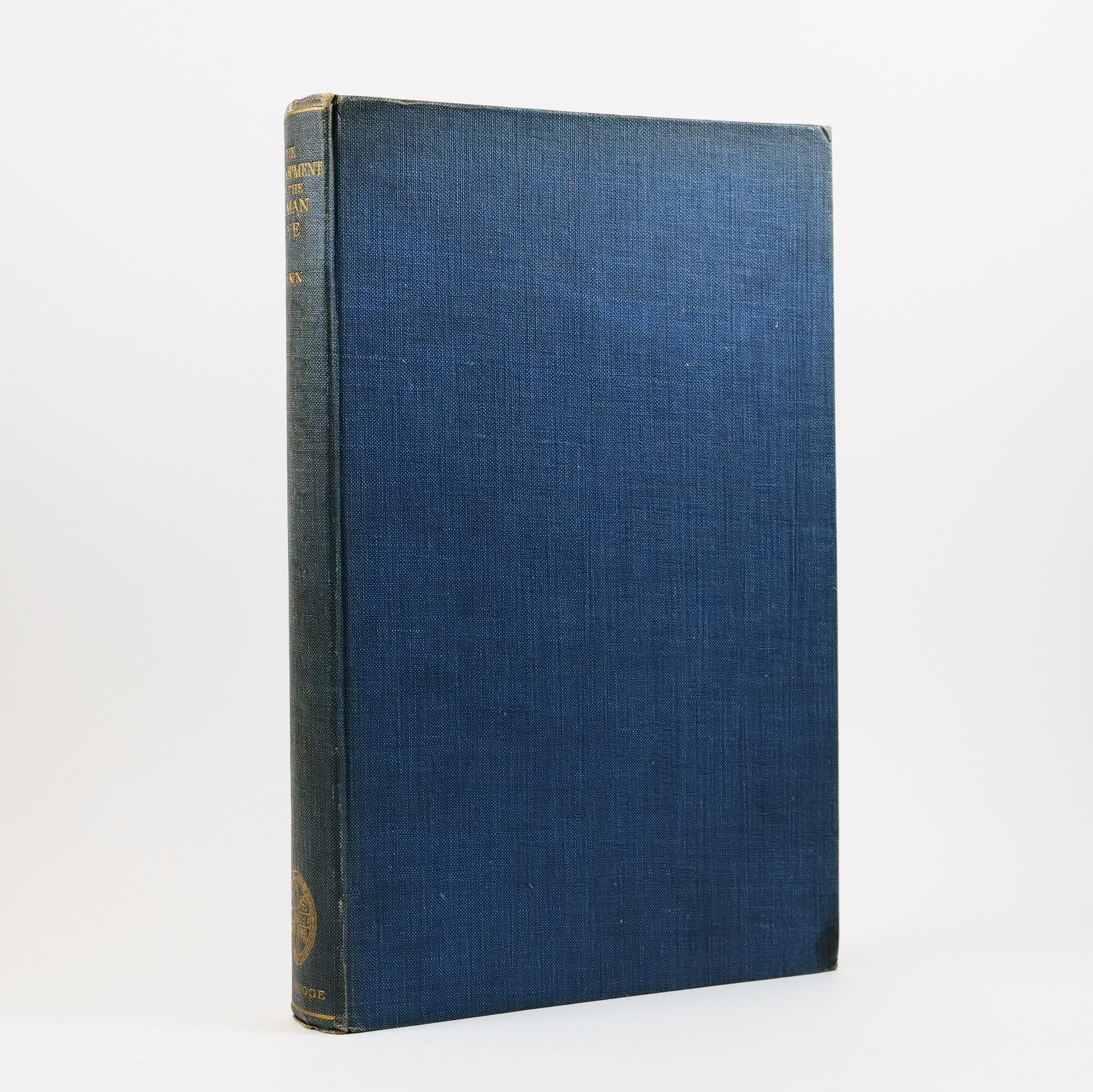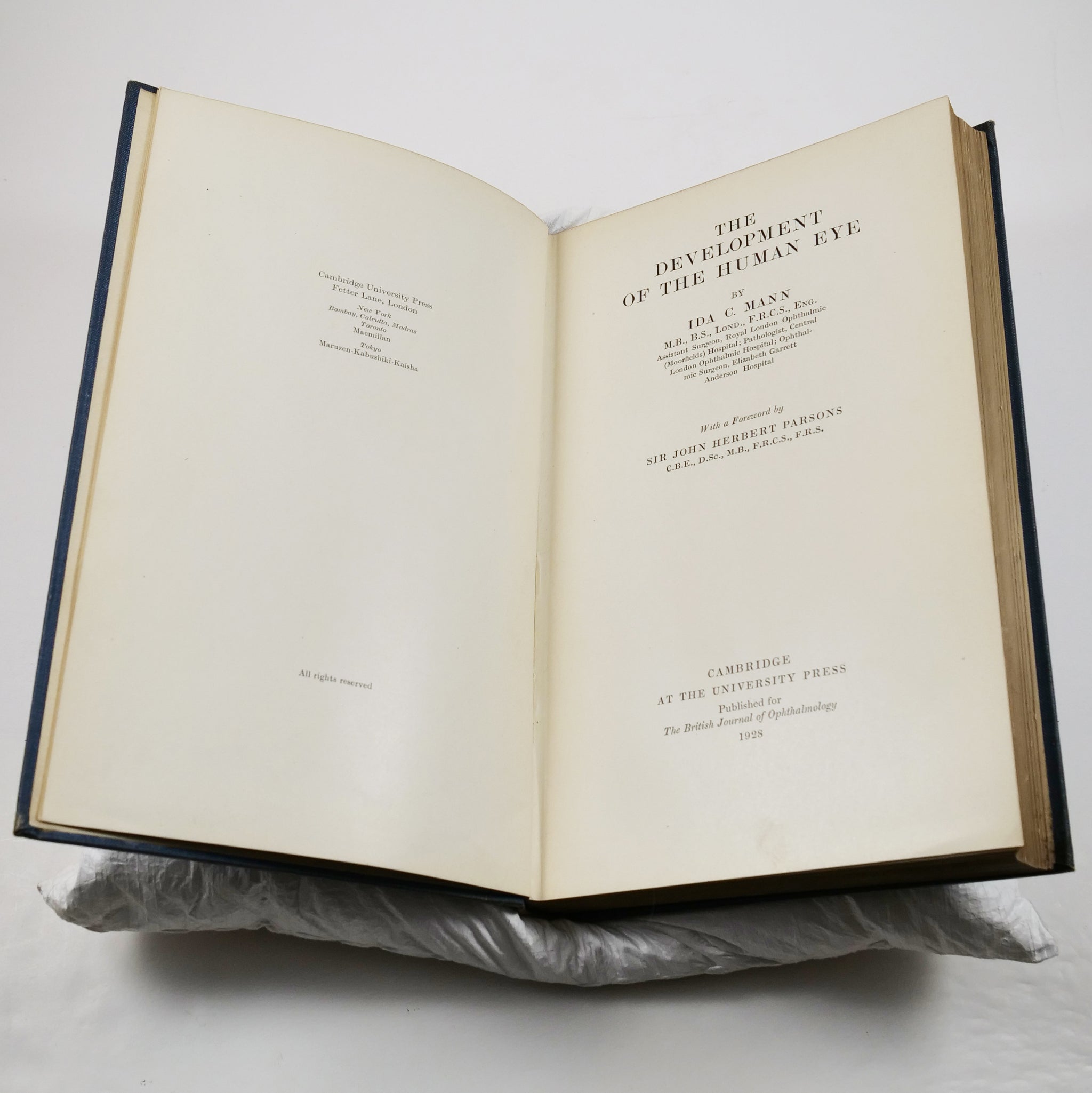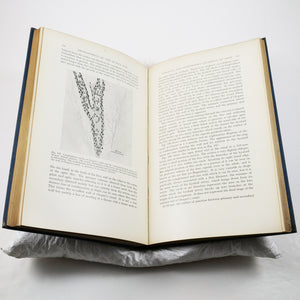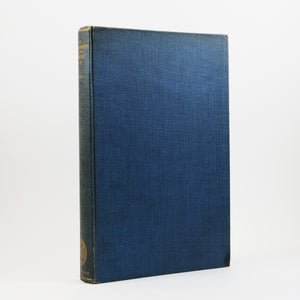Mann, Ida C. | The Development of the Human Eye
£650.00
-
The rare first edition of this groundbreaking work on the embryology of the human eye. No copies are noted in auction records since 1980.
Dame Ida C. Mann (married name Gye, 1893-1983) entered the London School of Medicine for Women in 1914, and also undertook training at the Royal Free and St Mary's hospitals. During the period at St Mary's she assisted Professor J. E. S. Frazer in embryological research; her developmental studies were presented as a dissertation for the DSc (London, 1924), and formed the basis of her notable first textbook, The Development of the Human Eye (1928), still in print forty years later” (ODNB).
“After qualifying Mann decided to specialize in ophthalmology, and took her first post under Leslie Paton at St Mary's, becoming FRCS in 1924. She also held several teaching appointments while she progressed up the ladder towards consultant ophthalmologist status, reaching the highest point in 1927 with appointment as senior surgeon on the staff of Moorfields Eye Hospital, London, the first woman ever to do so. At the same time she established a Harley Street practice and consolidated herself as a leading clinical ophthalmologist in London, but still carried on her developmental studies and teaching (including the diploma course in Oxford). In this period up to the Second World War she learned and promoted the then new technique of slit-lamp microscopy of the eye, applying it both to patients and to animals in the London Zoo. She was also instrumental in bringing to London in 1938 Josef Dallos, the Hungarian pioneer of glass contact lenses, just ahead of the Nazi take-over of Hungary, and with him she established the first contact lens centre in the United Kingdom. With the outbreak of war it became necessary to evacuate Moorfields. At the instigation of Sir Hugh Cairns Mann moved to Oxford in 1941 to undertake the clinical training of medical students diverted from London, and there she was appointed to Margaret Ogilvy's readership in ophthalmology, as well as a personal chair, the first woman ever to hold the title of professor in the University of Oxford, and a professorial fellowship in St Hugh's College. Despite this time-consuming work she still travelled to London to perform surgery, carried out important research on the ocular effects of war gases, and kept up a staggering number of other activities, including the vigorous reorganization of Oxford Eye Hospital. In this period she was the first to use penicillin to treat ocular infection.” (ODNB).
Mann emigrated to Australia in 1949 and continued her medical and research career, travelling throughout Australasia and the Pacific to study eye diseases. “In recognition of Mann's many contributions to research, teaching, and clinical practice, she was appointed CBE (1950) and DBE (1980), as well as receiving honorary degrees, prizes, and medals from many countries (ODNB).
-
...With a Foreword by Sir John Herbert Parsons. Cambridge: at the University Press, 1928.
Octavo. Original blue cloth, titles to spine gilt. 2 plates, numerous diagrams and illustrations from photos within the text. Spine rolled and a little faded, cloth rubbed at the extremities, upper corner bumped, lower hinge cracked, contents faintly toned. Very good condition.

